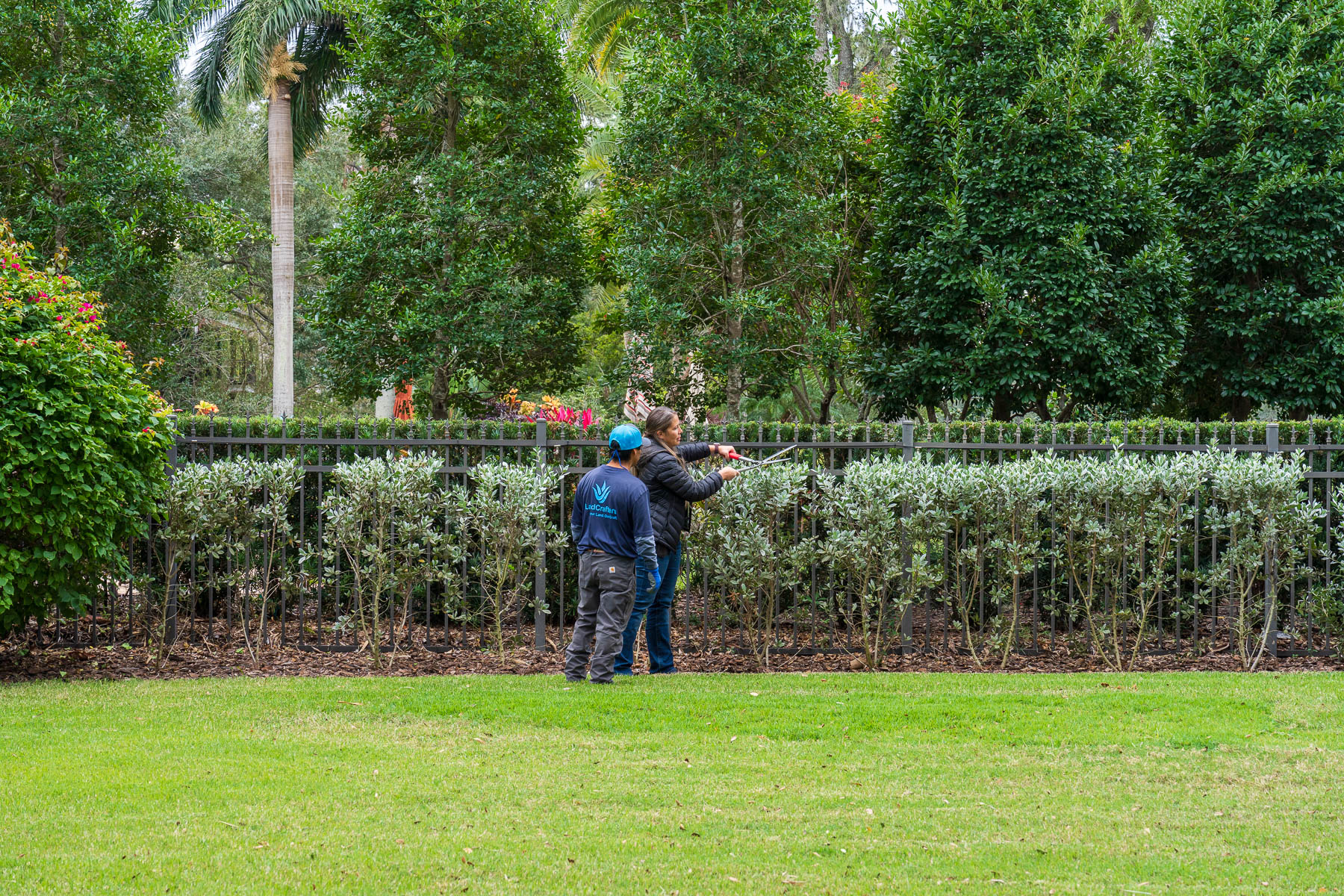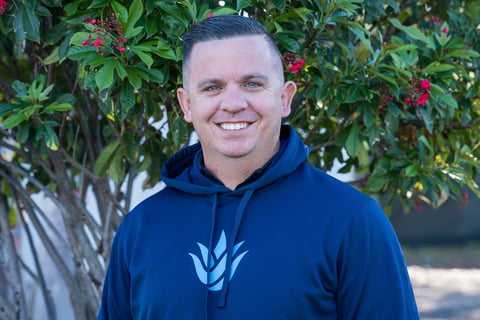
Rejuvenation Pruning in Florida: Take Your Pruning to the Next Level
 Michael Tomaino
Michael Tomaino
Warning, Florida folks—this ain’t your average, small-scale, trim up your plants pruning article. No-siree, Bob.
In fact, it’s quite the opposite.
You’ve just stumbled upon a guide that’s super dedicated to the idea that heavy-duty, total rejuvenation pruning is a vital and required step for keeping your Florida landscape (residential or commercial) looking fresh, thriving, and functioning properly. We guess you could say we’re hardcore heavy pruners over here (and we’ve got no problem with that title).
So, before you bring out your bonsai trimmers, be warned—this blog is all about busting out the big guns to make effective change in your Florida landscape (AKA, we’re not messin’ around when it comes to pruning up properties).
If you’re interested in heavy pruning (or just like, very intrigued as to why we’re taking such a strong stance over here about something like pruning landscape), we encourage you to keep reading. In this post, we’re going to talk about what rejuvenation pruning is, why it matters so much for your Florida landscape, and even give you do-it-yourself tips to tackle heavy pruning on your own. (Spoiler alert, if you’re not a do-it-yourself kind of person when it comes to landscape, don’t worry, we can help with that part).
Let’s Talk Why: Is Rejuvenation Pruning Your Florida Landscape Necessary?
In a word—yes. But, you’re not just here for a one-word answer, right? Don’t worry, we’ve got 20 years of experience, so we’re certainly not shy about sharing our wordy knowledge.

Essentially, rejuvenation pruning (often called heavy pruning), is hugely important in Florida, our landscapes are often filled with native plants that thrive in our tricky-but-sort-of-appealing climate. You have a Florida landscape, right, so you know the drill—when you designed your residential or commercial landscape, you picked grasses, trees, and plants that you know would thrive in our weird climate. Because otherwise, you’d be stuck with gorgeous flora and fauna that lasts for maybe a month at most.
Making the conscious decision to create a Florida landscape filled with the plants that will perform perfectly here is the right choice—but that doesn’t mean you can plant, water, and then watch your landscape thrive. No way. Because you’ve planted thriving plants, grasses, bushes, and more, you need to be prepared to deal with consistent and heavy growth.
Here are a few reasons why heavy pruning is necessary in Florida:
- Our plants tend to outgrow their assigned footprint. Why? Because they’re living things, and living things, well, they grow. And while it’s great that your plants are performing well, they might be overperforming, meaning, if not taken care of, they can encroach sidewalks, get too tall, block views, or become safety hazards. By heavy pruning, you can get those plants back to the right size they need to be to remain safe, functional, and beautiful.
- A good heavy prune is going to get rid of dead weight and encourage new growth. Think about plants that are ornamental—like oleanders or crape myrtles. These plants grow super well in Florida, right? Well, grasses and plants like this often aren’t self-cleaning plants, meaning that they’re going to need a hand from you to dispel the dead blades and things so they can have access to air, nutrients, and sunlight.
- It’s essentially a fresh start. While light pruning can help a plant perform better, it’s not giving the plant that overall new lease on life it needs to grow even better. When you heavy prune your landscape, your foliage and your flowers are going to grow back even better than you could have imagined. And that healthy rejuvenation will make a huge difference for the rest of that plant’s life.
How to Go About Rejuvenation Pruning on your Florida Landscape
We don’t expect you to magically just know everything about pruning, so if you’re new to the whole concept (especially to heavy pruning), you’re in the right place. We’re going to walk you through a few things you need to know when it comes to taking on a heavy pruning task on your Florida landscape.
- Think of heavy pruning as addition by subtraction. AKA, don’t be afraid to take away—you’re going to get something really great out of it. So, tackle all of that undergrowth, those dead leaves, those crowded branches. You’ll be glad you did.
- Don’t be afraid of how it looks right away. Heavy pruning doesn’t mean that you’re going to make a few snips and your landscape is going to look flawless. Nope—that’s light pruning. It’s like a trim. Heavy pruning is a necessary evil that doesn’t always look great. Your plants might look naked, too short, or even downright ugly—but if you did it correctly, they’ll grow back even more beautiful than they started.
- Consult a professional on how to cut and what tools to use. This will widely depend on the type of plant or grass you’re pruning, so do some research. Some plants might require you to cut at an angle. Some plants might require you prune 6 inches—others might say 12. It all depends on the type of plant you’re pruning.
When Heavy Pruning Makes Sense in Florida
It’s no secret that we have a weird seasonal flow in Florida. So, it only makes sense that when we suggest to heavy prune your Florida landscape might not exactly line up with how other regions of the US do it. And you know what? That’s OK. You didn’t move to Florida to be like everyone else, anyhow.

So, how do you know when it’s the best time to heavy prune your landscape in Florida?
We’re here to tell you.
Overall, we believe that heavy pruning should occur once a year after the last freeze in spring and right before the summer.
But, not every single plant in your landscape will benefit from heavy pruning exactly at this time. Ultimately, the best time to prune your plants and live branches will depend on the desired results. If you’re planning to do the rejuvenation pruning yourself, we highly suggest you research and get acquainted with each type of foliage, fauna, and more in your landscape—that way, you can understand what’s best for each plant. Some plants will not benefit from a single aggressive prune—but some out there desperately need it.
For example, with deciduous trees that you plan to live-branch prune, the growth will be maximized and the defects are easier to see when you prune just before early spring. If you prune trees like this when dormant, you can minimize the risk of pest problems that can go hand-in-hand with wounding—this will allow your trees to take full advantage of the growing season!
Further, you can control flowering (either preventing it or enhancing it!) based on the time of year you prune. If you’re looking to retain most of your flowers on your landscape trees (like crape-myrtles, which bloom on current season’s growth), then prune them in the winter before their leaves emerge (or, you could prune them in the summer just after bloom!). Fruit trees, on the other hand, can be pruned during dormant seasons to enhance the structure and distribution of their fruiting wood!
So, while late spring after a hard freeze is generally a great rule for pruning, the best pruning time for each plant or tree will depend on its specificities!
Reach Out to Landcrafters to Learn More About Rejuvenation Pruning in Tampa Bay
Not so interested in handling the heavy pruning process yourself? No biggie. We can help. At Landcrafters, we offer all kinds of pruning services to help get your landscape where it needs to be—in a place for optimal growth! If you’re interested in chatting with us about heavy pruning your Florida landscape, don’t hesitate to reach out to us! Give us a call at (727) 493-7123 or simply request a consultation.

Michael Tomaino
Head Gardener for Landcrafters, Inc. Michael Tomaino, a cornerstone of Landcrafters since its inception, oversees all aspects of business operations with a wealth of experience. With years of adept team management and leadership under his belt, coupled with a robust educational background, both within and beyond the industry, Michael is dedicated to steering Landcrafters towards becoming the foremost landscape management provider in the Tampa Bay Area.

